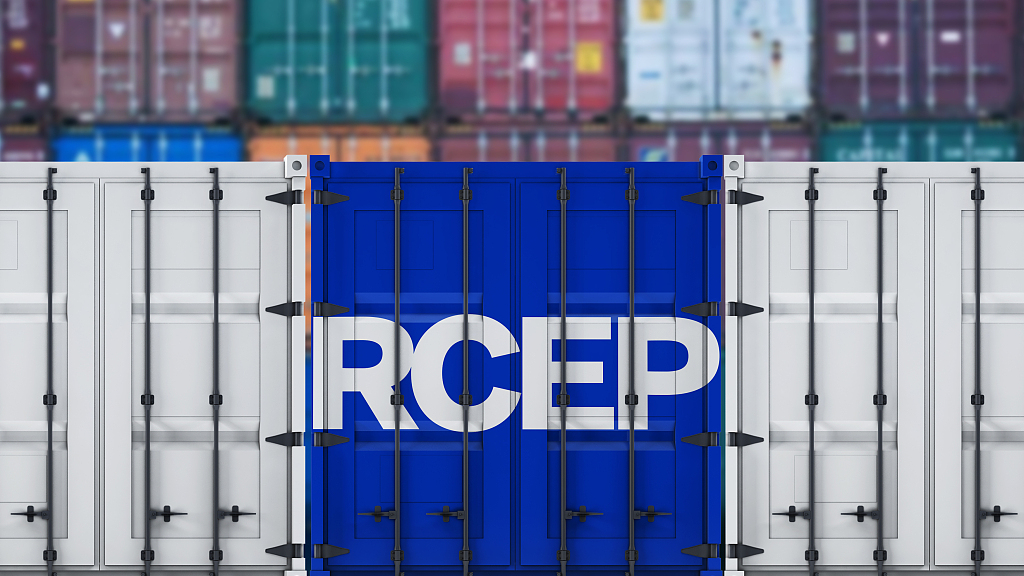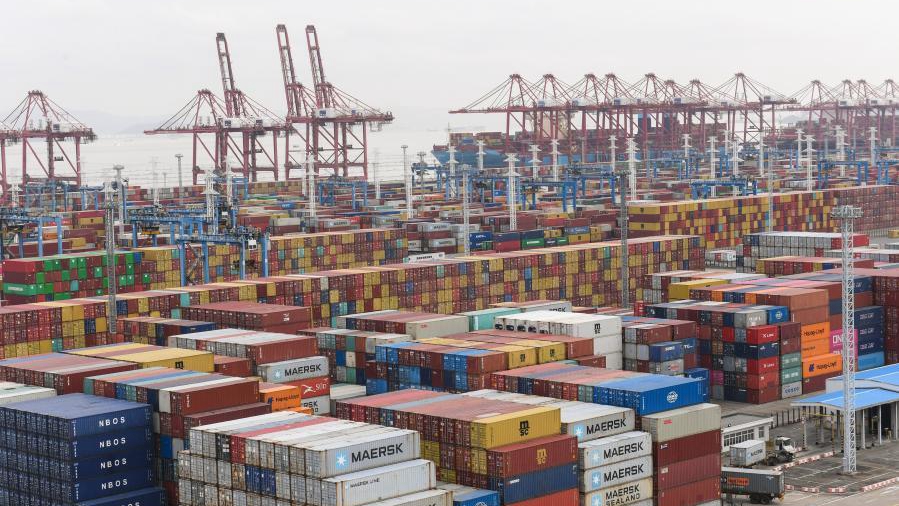
Editor's note: Ji Xianbai is an associate professor at the School of International Studies, Renmin University of China. He is the author of "Mega-regionalism and Great Power Geo-economic Competition" (Routledge, 2022). The article reflects the author's opinions and not necessarily the views of CGTN.
January 1 marks the one-year anniversary of the entry into force of the world's largest trading bloc, the Regional Comprehensive Economic Partnership (RCEP), consisting of ten Association of Southeast Asian Nations (ASEAN) member states along with China, Japan, South Korea and Australia and New Zealand. All parties but Myanmar and the Philippines have ratified it.
Reflecting on the past year, one can identify positive developments of the RCEP agreement. The world economic growth is sluggish, while economic globalization and free trade are facing severe backlash amid the pandemic.
The RCEP helps regional participants to weather the storm, hedging against unilateralism and trade protectionism resorted to by the West. Exports of countries such as China and Thailand to other RCEP participants had risen significantly last year.
The RCEP stimulates regional economic dynamism by reducing impediments to greater economic exchange and regional division of labor, such as tariffs and non-tariff measures. This paved the way for more efficient allocation of production, more efficient design and deployment of cross-border supply and value chains, and regionally coordinated trading rules and best practices in relation to international commerce.
The complementary pattern of regional economy where member countries give full play to their comparative advantages in international trade is emerging on the back of the RCEP. One may label this phenomenon, "complementary multilateralism," in which regional countries leverage their unique national strengths in the context of a multilateral economic framework to advance collective prosperity.

Zhoushan Port in Ningbo, Zhejiang Province, China, March 3, 2021. /CFP
Zhoushan Port in Ningbo, Zhejiang Province, China, March 3, 2021. /CFP
As we celebrate the RCEP, it faces competition from another major trade arrangement in the region, the Comprehensive and Progressive Agreement for Trans-Pacific Partnership (CPTPP). The CPTPP is overseen by Japan in temporary charge, although the United States remains out of it. The CPTPP incorporates 11 economies along the Pacific Rim, while Britain has been knocking at the door since early January 2018.
The CPTPP is touted as a "higher-standard" trade template facilitating greater economic integration and providing more advanced provisions on state-owned enterprises and competition. To showcase its adherence to trade openness and support for regionalism, China has applied for accession to the CPTPP.
Looking forward, there can be three scenarios to correspond with the different relationships between the RCEP and CPTPP. The first one is "convergence" of the RCEP and CPTPP to be morphed into an overarching trade deal, such as the Free Trade Area of the Asia-Pacific. The other scenario is "parallel and competition." The RCEP and CPTPP will compete to attract new applicants to be the trade platform organizing regional commercial relations in East Asia and beyond. The final scenario is "divergence" where the CPTPP are multilateralized into a global trade deal and the RCEP is expanded to promote regional integration in Asia.
The "convergence" scenario is the most benign vision over the provision of regional public goods. But the neo-realist logic of power politics would suggest that the "parallel and competition" scenario will be the most likely outcome. The CPTPP has garnered attention from other countries including Colombia, Costa Rica and Uruguay while Bangladesh has filed their applications to join the RCEP. The competition is heating up.
While the RCEP would continue to attract Asian entrants, its expansion into the Americas should also be high on the agenda. Admitting members of the Pacific alliance including Chile, Colombia, Mexico and Peru can be a step in the right direction. Bridging the two sides of the Pacific Ocean via the RCEP agreement is conducive to the establishment of the Asia-Pacific Community of Shared Future and complements development of the Trans-Pacific Silk Road.
2022 was a year for consolidating RCEP, while 2023 should be a year for expanding the mega-trade deal to benefit more countries and peoples.
(If you want to contribute and have specific expertise, please contact us at opinions@cgtn.com. Follow @thouse_opinions on Twitter to discover the latest commentaries in the CGTN Opinion Section.)